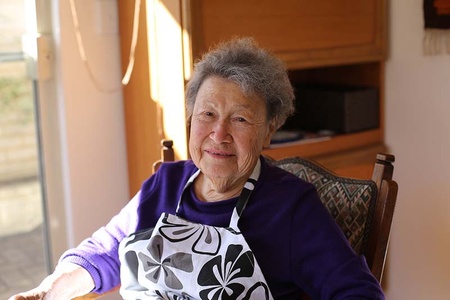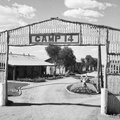Mary Nakashiba
Born: Thursday Island, 1926
Interned: Tatura, Victoria, 1942–44
“I felt betrayed by my country”
Seventy years have passed since half-Japanese Mary was interned as a fifteen-year-old, but the shocking turn of events after Japan bombed Pearl Harbor is still clear to her. After being arrested in Darwin, Mary and her family were transported to Sydney by ship along with hundreds of other Japanese. “When we got off the ship, there was a crowd of people lining the harbor. They were screaming, ‘Kill them! Shoot the bastards!’ I couldn’t believe it—these were Australians, people of my own country. I’ll never forget it. I was in total, utter shock. That was the point that I realized my life would never be the same.”
Mary’s brother, Sam, was separated from the family and taken away. “My mother protested that he was only seventeen years old. But [the soldier] said, ‘No, he’s got to go.’ We didn’t hear from him until he was released… We didn’t know where he was…” The rest of the family—Mary; her Japanese father, John, who migrated to Australia fifty years earlier; her European mother, Anna; and twelve-year-old sister Rhoda—spent the next three years inside the barbed-wire fences of Tatura camp in Victoria.
Although they were treated reasonably well by staff at camp, it was a far cry from the comfortable life they’d had in Darwin, where Mary’s father had a general store. They endured freezing winters and had to sleep on sacks stuffed with straw until Mary’s mother negotiated with the Red Cross to receive proper mattresses and bedding.
For a vibrant teenager such as Mary, the years at camp were “a time of extreme boredom.” “You felt powerless… I thought many times of climbing that fence. But I thought, if I do climb that fence and they don’t shoot me, where would I go?”
During the many months she was interned, Mary mourned “the loss of [her] Australian identity.”
“I felt betrayed by my country… That was the biggest hurt of all—to know that I was an enemy alien in my own country. I had no people, no country, because I wasn’t accepted by the Australian people, and I wasn’t accepted by the Japanese. I couldn’t identify with anybody.”
For Mary, one of the most difficult aspects of internment was living with the imperialistic Japanese internees at camp. When Mary refused to bow in the direction of the Emperor, one of the compound leaders forcibly pushed her head down. And when Japan bombed Darwin in February 1942, Mary was enraged that the internees around her celebrated.
“They put on a celebration. Banzai! It was just terrible… I lost a lot of close, close friends [in Darwin]. So that bred a lot of hatred. I think hatred keeps you alive, keeps you going… My mother used to say, ‘You mustn’t hate.’ But I hated.”
The Nakashiba family’s inability to fit in with the more traditional Japanese internees was a continual source of friction, culminating in a dispute over laundry facilities.
“My mother was using a boiler in the laundry, and one of the internees came and took out her washing and dumped it all on the ground so that he could use it. She shouted at him, so he hit her on the head with a stick. I threw a bar of soap at him. Then he blamed me for starting the fight.”
As a result, Mary’s family moved into a neighboring compound that housed mostly Japanese from the Dutch East Indies (present-day Indonesia). “The people in the Indonesian camp were very nice people,” Mary says. “We made a lot of friends.”
Mary’s father had a mental breakdown in camp, which she attributed to the conflict he felt as a Japanese who had lived nearly all his life in Australia.
“He felt Australia was his country, his home… and so to have this disrupted and find that you are an enemy alien… And also there was the heartbreak [of the Darwin bombings]—this was his country that was doing it… He knew there was no place for him.” John died a few months after they were released from internment in 1944. “It’s the older people, not the younger people, that are really affected by warfare,” she says.
After the war and the death of Mary’s father, the family was penniless and relied on the kindness of friends, family, and strangers to get by. Despite Mary’s ordeal, she is not bitter and does not want an apology or compensation from the government. “It’s part of my life, I accept it… I think it built a lot of iron in me. It built resilience. And I tell you what, it certainly gave me a lot more compassion.”
To learn more about Japanese in Australia >>
*This article was originally published on Loveday Project on October 22, 2012.
© 2012 Christine Piper





